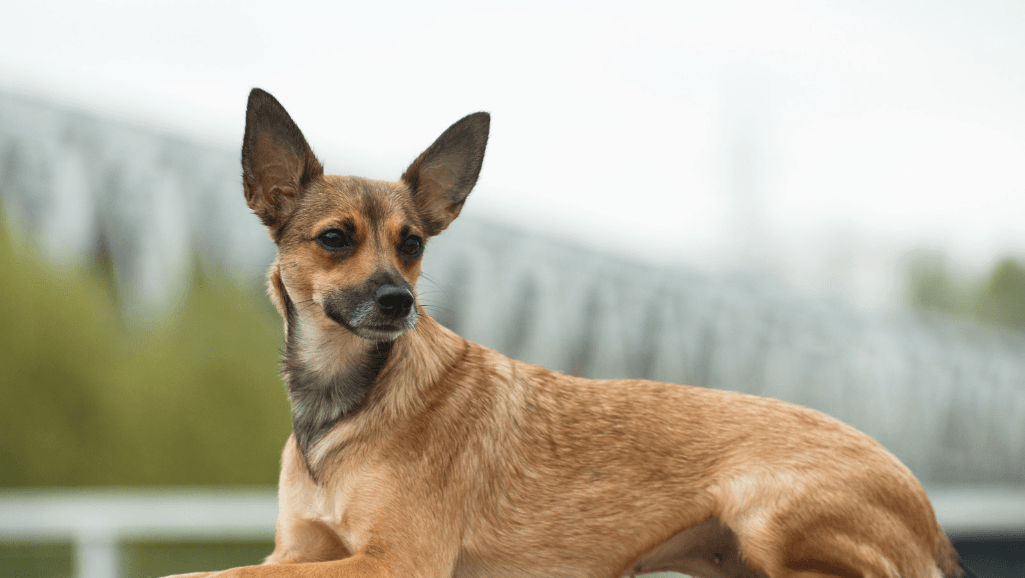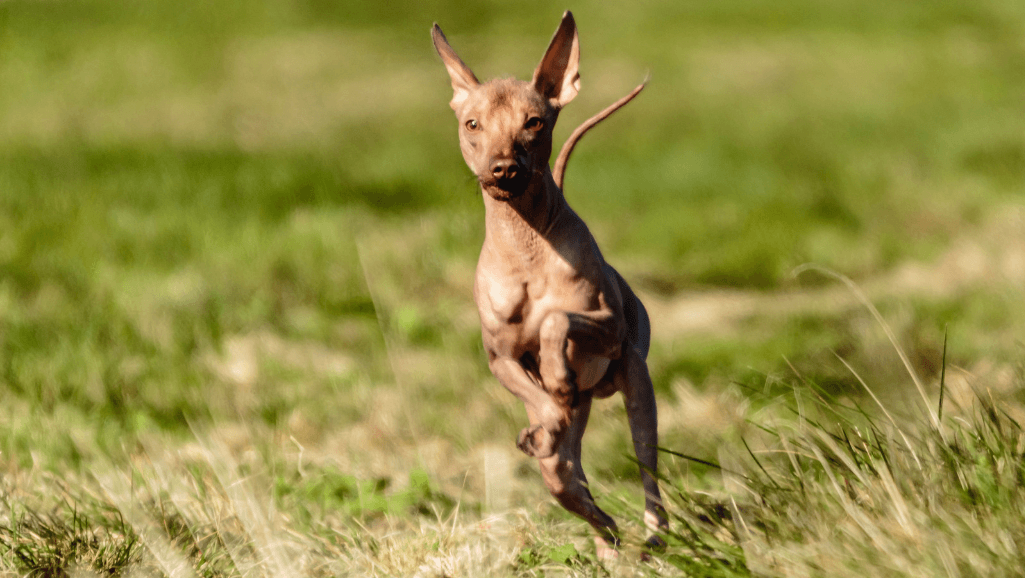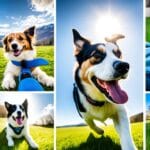Hairless dog breeds, like the American Hairless Terrier and Xoloitzcuintli, offer love and need care. They are great for people with allergies. But, because they don’t have fur, they require special attention to stay healthy and happy.
To take care of a hairless dog, you should groom them often and feed them well. Use preventive care to stop common health issues. Also, feeding them small meals several times a day and giving them natural chews, like the Tibetan Dog Chew, can be very helpful.
These dogs are prone to skin and dental problems, and issues like Patellar Luxation. So, regular check-ups and good healthcare are a must. Keep them fit with exercise, the right diet, and good grooming to avoid obesity and live a long life.
Following these care tips will help owners make their hairless dogs healthy and happy. It’s a way to overcome the challenges of being hairless.
Key Takeaways
- Hairless dog breeds are hypoallergenic and suitable for allergy sufferers.
- Regular grooming and skin care are essential to prevent issues such as sunburn and lesions.
- Multiple small meals throughout the day aid in better digestion and health maintenance.
- Exercise and mental stimulation are paramount for these high-energy breeds.
- Proactive dental care helps in preventing dental diseases common in hairless dogs.
Introduction to Hairless Dog Breeds
Hairless dog breeds like the American Hairless Terrier and the Mexican hairless dog (Xoloitzcuintli) are becoming more popular. They have unique looks and characteristics that make them stand out in the dog world.
The American Hairless Terrier is known for being lively and smart. It started in Louisiana in the 1970s as a mutation of the Rat Terrier. These dogs live 12 to 16 years and need frequent grooming to keep their skin healthy.
The Mexican Hairless Dog, or Xoloitzcuintli, is deeply rooted in history. The Aztecs saw them as symbols of protection and healing. Xolos are protective and like to be around people. They’re also one of the oldest hypoallergenic breeds, which is great for allergy sufferers. Since they’re hairless, they don’t shed much, reducing allergy triggers.
The lack of hair in these breeds is due to a specific genetic mutation. Discovered in 2005, this mutation was linked to a unique chromosome in dogs. Dogs with this mutation keep their hairs to a minimum. Interestingly, even some ‘furry’ breeds can sometimes have hairless puppies.
Hairless dogs are great options for people who have allergies. They need less care and have a rich history. For a special and unique pet, look into these amazing hairless dog breeds. They have a fascinating story in the world of dogs.
Hairless Dog Characteristics
Hairless dogs have both unique looks and personalities. We will dive into their distinct hairless dog characteristics. This includes how they look, act, and what they’re like to be around.
Appearance
These dogs look quite unique because they don’t have fur. This lets their skin colors show, which can go from dark brown to pink, even with spots. For example, the Xoloitzcuintli can be as tall as 10 to 23 inches and weigh 10 to 55 pounds. The American Hairless Terrier, on the other hand, is 12 to 16 inches in height and weighs 12 to 28 pounds. So, they come in many sizes, making them a fit for many homes.
Temperament
Hairless dogs are full of life and love. Breeds like the Chinese Crested are known for their energy, standing at 11 to 13 inches and weighing 8 to 12 pounds. This makes them great friends. They’re also smart and quick, fitting for games that keep them sharp. Lore people, the Peruvian Inca Orchid has the same characteristics but comes in different sizes, offering more options.
Behavior
These dogs are not couch potatoes; they love moving and playing. They are keen on the hunt, so they need training and social time. To help with their need to chew, products like the Tibetan Dog Chew can be beneficial. This is part of their wider care, ensuring they stay healthy and act well.
Genetic Factors:
| Mating Type | Expected Hairless Puppies | Expected Coated Puppies |
|---|---|---|
| Hairless to Hairless | ~66.6% | ~33.3% |
| Hairless to Coated | ~50% | ~50% |
| Coated to Coated | 0% | 100% |
Breeding hairless dogs can get pretty complex. Mating them, you’ll find about 66.6% hairless and 33.3% coated if both are hairless. If one is coated, you get a 50/50 split. But, if both are coated, you’ll only get coated pups. This shows how important breed genetics are when choosing the best hairless dog breeds to breed or adopt.
Food and Nutrition
A balanced diet is key for hairless dogs, especially top breeds like the American Hairless Terrier. They need proteins, fats, carbs, and key vitamins to be healthy. Their unique skin can be sensitive, making healthy eating even more important.
Dietary Needs
American Hairless Terriers need a mix of proteins, carbs, fats, and nutrients. This keeps their skin, muscles, and body health in check. Fresh diets are a good option, even if they cost more. For extra benefits, consider supplements and treats like Tibetan Dog Chews. They are good for teeth and add to a balanced diet.
Feeding Frequency
It’s not just what hairless dogs eat, but how often they eat that matters. Feed them little and often instead of one big meal. This helps their body absorb nutrients better. They should move to adult food at 10 to 12 months or when nearly full size.
Maintaining a healthy weight is key for these dogs. Always keep an eye on their calories. Limit treats, such as Tibetan Dog Chews, to ensure they don’t overeat. Good food, the right portions, and careful grooming are the secrets to a long, healthy life.
| Ideal Weight | Female Adult | Male Adult |
|---|---|---|
| 12 to 16 pounds | 12 to 16 pounds | |
| Exercise Needs | 30 to 60 minutes per day | |
| Lifespan | 14 – 16 years | |
| Diet Transition | 10 to 12 months old or when reaching 90% of expected weight | |
| Treat Intake | No more than 10% of daily caloric intake | |
Grooming for Hairless Dogs
Hairless dogs need special care to meet their grooming needs. They must be bathed frequently and moisturized. It’s important to protect them from the sun and look after their teeth.
Skin Care
Hairless dogs should be bathed once a week, with more baths in summer. Use gentle shampoos to avoid skin issues. Products like baby wash work well.
After bathing, moisturize their skin to prevent dryness. Products such as Burt’s Bees Baby Bee lotion and coconut oil are great. Adding a conditioner like Earthbath Creme Rinse can also help.
Don’t forget sun protection. Use kid-friendly sunscreen and sometimes clothes. Remember, if it’s cold for you, it’s cold for your dog too.
For a deeper clean, consider a monthly coconut oil and sugar scrub. This is good for exfoliation. Keep their ears clean too with products like Otoclens to prevent infections.
| Grooming Task | Frequency |
|---|---|
| Bathing | Once a week (more in summer) |
| Nail Trimming | Every 1 to 2 weeks |
| Ear Cleaning | As needed |
| Skin Moisturizing | After every bath |
| Sun Protection | Whenever exposed to the sun |
| Pimply Stage Care | Attention during maturation |
Dental Care
It’s crucial to keep hairless dogs’ teeth healthy. Check their teeth and gums weekly. Give them dental treats to help keep their mouth clean.
Using special dog dental products is beneficial. And don’t skip professional cleanings. All these steps are essential for their oral health.
By following these grooming practices, your hairless dog will stay clean and happy. Regular care for their skin and teeth is key. This care makes sure they are in great health overall.
Common Health Issues in Hairless Dogs
Hairless dogs need extra care because of their unique traits. Owners should know about common health issues like skin problems, dental diseases, and joint conditions. This knowledge will help them take better care of their pets.
Skin Problems
Their skin is where many problems start for hairless dogs. Without fur, dogs like the Mexican Hairless Dog may get skin allergies, acne, and sunburn. Owners should groom their pets regularly and use special skincare products. Sunscreen and moisturizers can prevent dryness and skin irritations.
Dental Issues
Hairless dogs can have serious dental troubles. This is especially true for breeds like the Hairless Chinese Crested. They might face issues like malocclusion and few teeth. Owners need to brush their dog’s teeth often and use products like the Tibetan Dog Chew. This helps keep their teeth healthy and free from plaque.
Dental care is very important for these dogs.
Patellar Luxation
Joint problems are often seen in hairless dogs. The Xoloitzcuintli is known to have patellar luxation. This is when the kneecap moves out of place. It can be painful and make it hard for the dog to walk.
Keeping these dogs at a healthy weight is essential. So is regular, moderate exercise. This keeps their joints strong and healthy.
Regular visits to the vet are crucial for managing these issues. Along with grooming and a healthy diet, active living is key to their well-being. This approach helps hairless dogs lead happy, healthy lives.
| Common Health Issues | Preventive Measures |
|---|---|
| Skin Allergies, Acne, Sunburn | Regular grooming, sunscreen application, moisturizing products |
| Dental Diseases (Malocclusion, Oligodontia) | Oral hygiene practices, regular check-ups, dental chews |
| Patellar Luxation | Weight management, appropriate exercise routines, and veterinary oversight |
Exercise Requirements
Keeping your hairless dog healthy and happy means you have to mix up their activities. This includes both physical and mental exercises. It’s key to know what your pet needs to stay well.
Physical Activities
Every hairless dog needs regular exercise. Some, like the American Hairless Terrier, need more activities than others. For them, try walking, playing fetch, and doing agility training. If you have a puppy, they have tons of energy and should have short bursts of exercise several times a day. This is better for them than one long walk. Seniors should focus more on slow walks than running.
For days when it’s too rainy or cold to go outside, a dog treadmill is a good option. You can also try dog sports like AKC Lure Coursing and AKC Agility. These keep your hairless dog’s mind and body active in fun ways.
Mental Stimulation
Mental exercise is as important as physical activity. It’s vital for your dog’s happiness and health. Use puzzle toys and play that challenge your pet’s thinking. This helps keeps them sharp and meets their need for mental engagement. Training and teaching them new tricks also does this. Plus, it gives them a good physical workout too.
Learn more about the exercise requirements for dogs to make sure you’re keeping your pet happy and healthy.
| Activity Type | Examples | Beneficiaries |
|---|---|---|
| Physical Activities | Walking, Fetching, Agility Training | High-energy breeds, Puppies, Senior Dogs |
| Dog Sports | AKC Lure Coursing, AKC Agility | High-energy breeds |
| Mental Stimulation | Puzzle Toys, Training Exercises | All dogs |
Training Tips for Hairless Dogs
Hairless dogs, like the American Hairless Terrier, really benefit from good training. It helps them become happy, well-adjusted pets. This guide focuses on teaching your hairless dog basic obedience, using positive rewards, and important social skills. These tips will help make your pet a joy to be around.
Basic Obedience Training
Starting early with basic obedience training is key. It’s about teaching them to follow important commands for their safety and health. Always practice commands like ‘sit,’ ‘stay,’ or ‘come’ often. These are easy for both you and your American Hairless Terrier to learn.
Positive Reinforcement
Using rewards is a very good training method. Giving your dog treats or praise when they do something good. Things like Tibetan Dog Chew Puffs can be a great treat. Doing this a lot will help your dog trust you more. This makes training fun and effective.
Socialization
Getting your hairless dog used to people and places early is crucial. This makes them friendly and less scared. For American Hairless Terriers, early socialization is essential. It helps them feel comfortable in new situations and can also catch health problems early.
| Feature | Details |
|---|---|
| Height | 12 to 16 inches |
| Weight | 12-16 pounds |
| Life Expectancy | 14-16 years |
| Health Screenings | Hip dysplasia, cardiac conditions, luxating patella |
| AKC Recognition | 2016 |
Follow these training tips to raise a well-behaved hairless dog. With careful training, your American Hairless Terrier will fit right into your family.
Finding Hairless Dog Breeders
If you are looking for a hairless dog, finding a good hairless dog breeder is key. Breeds like the American Hairless Terrier, Chinese Crested, and Peruvian Inca Orchid need special care. Starting with the right breeder helps a lot.
Think about hairless dog care when looking at breeders. Good hairless dog breeders care a lot about their dogs’ health. They follow strong ethical rules. They give health records, ensure good living spaces, and help dogs socialize early.
Different hairless dog breeds have unique traits. For example, the American Hairless Terrier is hypoallergenic. The Xoloitzcuintli has a rich history with the Aztecs. Knowing what traits you like can guide you to the right breeder.
It’s also important to see if the breeder is committed to quality and breed care. A good breeder works to better the breed. This shows in how well they care for their dogs, regular vet visits, and the help they give to new owners.
Here are some key points to look for in a good hairless dog breeder:
- Transparency in health records and lineage
- Proper living conditions for dogs
- Early socialization and training practices
- A strong support network for new owners
To sum up, do your homework when picking a hairless dog breeder. It can make owning a hairless dog a great experience. Your dog will get top-notch care right from the start.
Choosing the Right Hairless Dog for Your Family
Finding the right hairless dog for your family is key. You need to look at each breed’s special traits. This way, you can pick a dog that will fit right in at home.
Compatibility
Picking a dog that fits your family well is important. The top hairless breeds like the Chinese Crested and American Hairless Terrier differ in their personalities. You should think about what your family is like. Some hairless dogs are calm and love being around kids. Others are full of energy and need a lot of playtime.
Space and Lifestyle
Consider how much space you have and how active your family is. Hairless dogs usually need a lot of play and exercise. The Xoloitzcuintli needs big spaces to move around. But, smaller dogs like the Peruvian Inca Orchid might be better for apartments if they get enough exercise.
| Breed | Temperament | Space Needs |
|---|---|---|
| Chinese Crested | Affectionate and playful | Moderate; suitable for apartments with daily walks |
| American Hairless Terrier | Energetic and intelligent | Moderate to high; requires space for activities |
| Xoloitzcuintli | Calm and devoted | High; prefers larger spaces for physical activities |
| Peruvian Inca Orchid | Loyal and alert | Low; adaptable to apartment living |
Knowing the pros and cons of each breed is a must. It will guide you to make the best choice. Whether you have a big yard or live in an apartment, there’s a hairless dog for you. They can truly become part of your family and bring a lot of joy.
Conclusion
This journey through our comprehensive hairless dog guide has shown us how special these breeds are. We’ve learned about the Mexican Hairless Dog (Xoloitzcuintli), the Peruvian Inca Orchid, and the Chinese Crested. Each has their own unique charm and care needs. They are loved for being hypoallergenic, but owning a hairless dog means spending extra time on their care. This includes regular grooming and making sure they’re protected from the sun. It also means keeping their skin healthy with lotions and creams.
Living with a hairless dog also means understanding their sensitivity to the weather. You need to be extra careful when it’s very hot or very cold. It’s also important to choose a dog from a responsible breeder. This helps prevent some health problems. Good care and breeding are key to keeping these dogs healthy and happy.
Owning a hairless dog can be very rewarding, but it requires work. They need the right grooming, good food, and a loving home. By meeting their unique needs, you can have a great bond with your pet. This guide is here to help you understand and care for your hairless dog, giving you the knowledge and confidence you need.




















